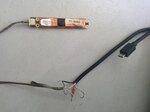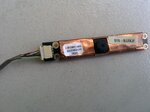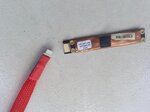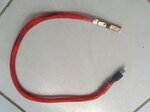Thayne
Member level 3
I want to attach a webcam taken from a laptop to a phone and use this "USB camera" app to use the phone as a display for the webcam. (I am making an endoscope for my wife's work as a biologist.)
So, there are five wires at both ends of the removable cable that plugged the webcam to the laptop (via plastic connectors). I cut open a few USB cords and the color coding does not match up. I looked up the pinouts to wire Standard USB pinout (Type A) and micro USB (micro-B), but nothing is matching color-wise, or in connector positions.
Please help.
Thanks in advance!


So, there are five wires at both ends of the removable cable that plugged the webcam to the laptop (via plastic connectors). I cut open a few USB cords and the color coding does not match up. I looked up the pinouts to wire Standard USB pinout (Type A) and micro USB (micro-B), but nothing is matching color-wise, or in connector positions.
Please help.
Thanks in advance!




